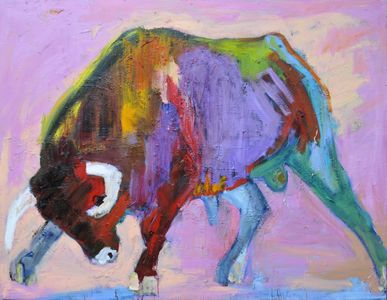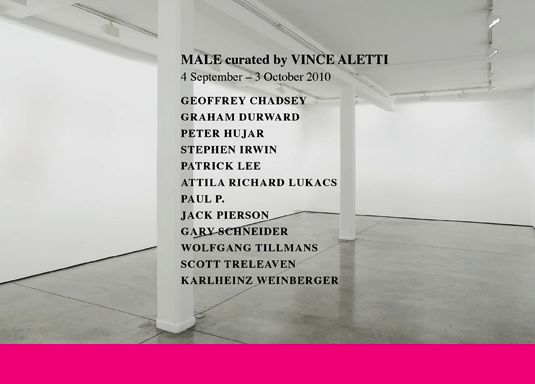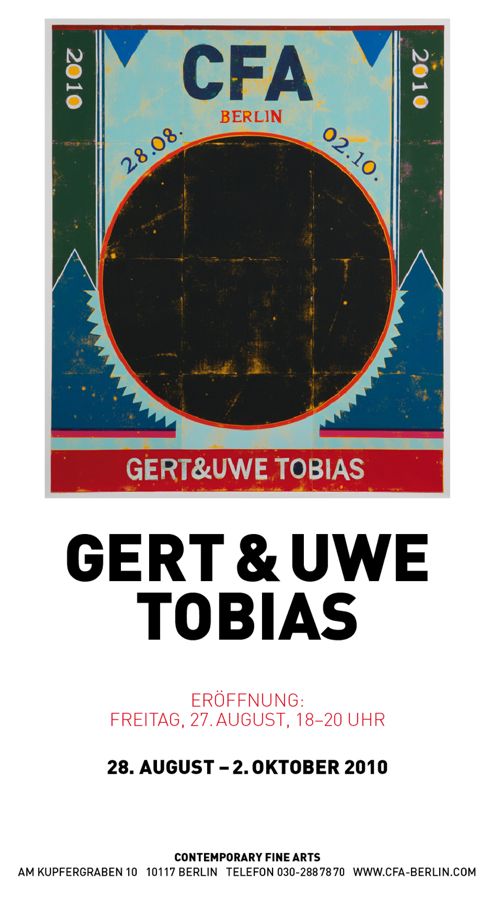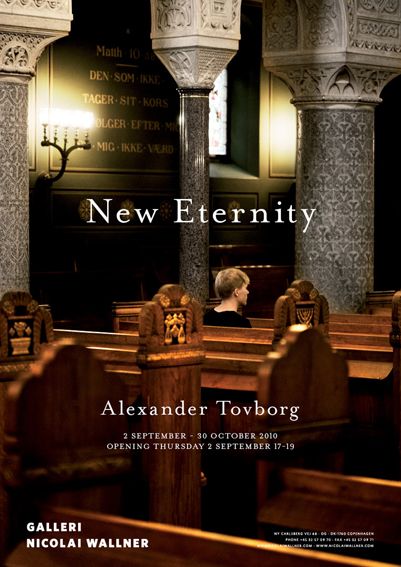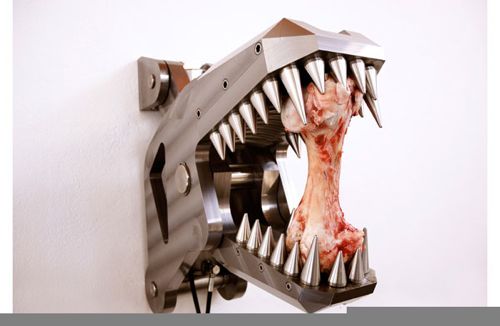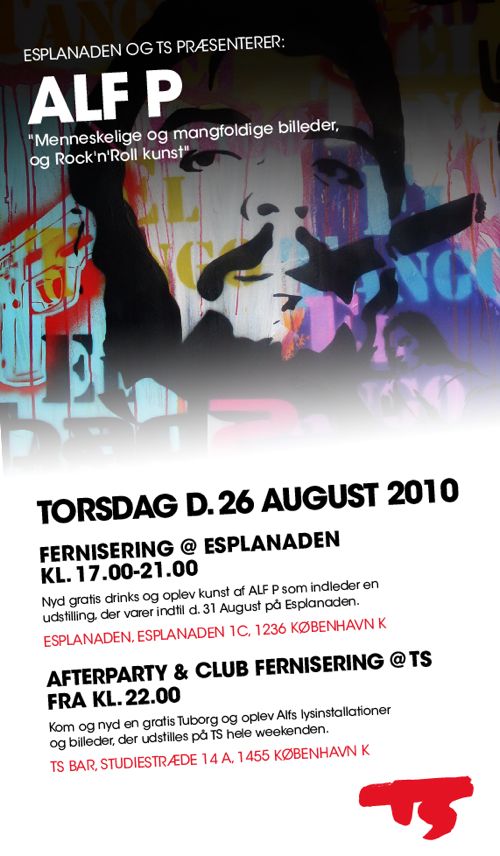
Tag: 2010
Lise Malinovsky
JEFF SONHOUSE @ MARTHA OTERO GALLERY
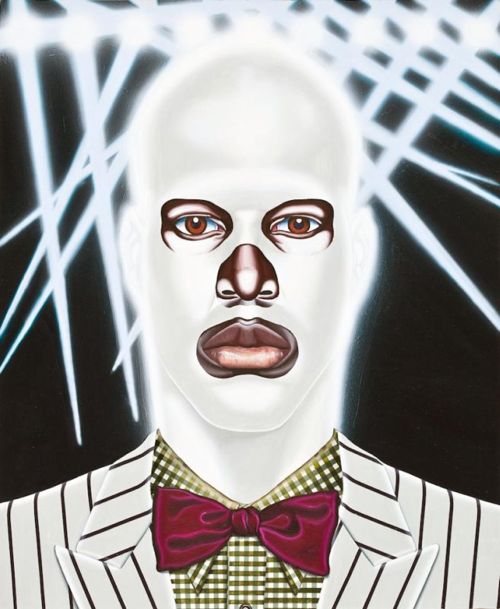
Martha Otero is pleased to present New York based artist Jeff Sonhouse’s exhibition, ‘Better Off Dead,’ Said The Landlord. For his Los Angeles solo debut, Sonhouse deconstructs the accepted theories of ownership and invites us to reexamine how we interpret relationships of power, as tenants of an overbearing architect. With alluding portrayals of glorified facades, he creates a frictional energy of immortality.
The exhibition will include Sonhouse’s recent portraits of oracular figures that evoke familiarity, such as Papi Shampoo, bearing a Jesus like stance and demeanor. We’re instantly drawn to the silky smooth satin textured vestment and its vividly deep aquamarine and violet colors. Draped over a brash black and white pinstripe suit with ashen hands in an iconic Pantocrator posture. The background palette harmonizes burgundy with black, phthalo blues and rich purples into a contemporary vision of a halo. Maintaining his ingenious approach to mixed media, we see meticulous hair constructed of matches and steel wool combined with composite figures of oil paint. Sonhouse’s unorthodox use of materials successfully disorients the viewers prescribed sense of space. Even more irresistible are Sonhouse’s masks and the intense gaze concealed behind them.
Jeff Sonhouse was born in 1968 in New York where he currently lives and works. He received his BFA from the School of Visual Arts, New York, and his MFA from Hunter College in 2001. He has exhibited at The Power Plant, Toronto, Canada; Jack Tilton Gallery, New York, NY; Studio Museum in Harlem, New York, NY; Jack Shainman Gallery, New York, NY; Samson Projects, Boston, MA; Atlanta Contemporary Art Center, Atlanta, GA; The New York Historical Society, New York, NY.
Male /
Ferdinand Ahm Krag
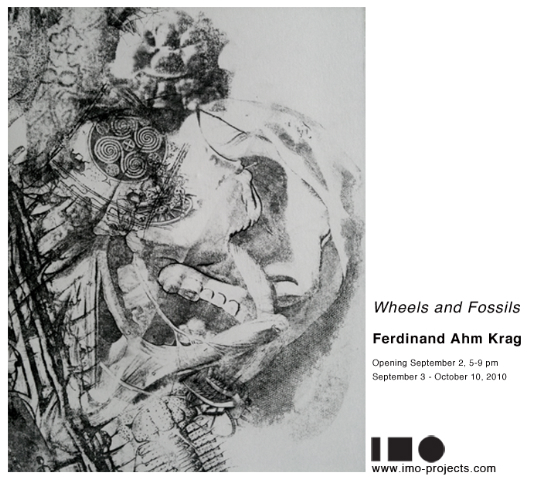
For the exhibition Wheels and Fossils on IMO Ferdinand Ahm Krag presents around twenty paintings, drawings and objects made in the period 2005-2010. Some smaller drawings have been five years in the making, while other and larger works were made just recently. Ahm Krag has also worked with a new type of irregular image that is made by beating standard MDF pieces.
The exhibition presents two video sequences with the title “How to construct a face, how to make an expression’. One video shows history’s first computer animated face created by Frederick Parke at the University of Utah in 1972. The second video is a clip from the television series ‘Cosmos’ (1980), written and narrated by astronomer Carl Sagan. The video presents a re-enactment of an ancient Japanese legend. In an old myth it is explained to us why Japan has a certain crab species, whose shield ‘represents’ a face. And not just any face, but the exact face of an angry samurai warrior. At the end of the sequence, Carl Sagan reveals the ‘natural’ explanation to this face: the face has slowly been exposed onto the crab shell throughout the past 900 years through the mechanism of what Charles Darwin called ‘artificial selection’. Ferdinand Ahm Krag has included the videos based on two reoccurring themes in his drawings and paintings. One of theme could be termed ‘THE PROBLEM OF THE FACE’ – How do you get one? How do you get rid of it again? How do you live with it? How do you live without it? The second theme relates to our dubious notions of artificial and natural. It is Ferdinand Ahm Krags point that our conceptual apparatus around “artificial” and “natural” sometimes prevents us from experiencing nature, where it really is.
Ferdinand Ahm Krag also shows a series of acetone prints consisting of motifs from natural history and cultural history. They are based on the perception of ‘images’ as organisms that live and die, and therefore create fossils to be deposited in sediment layers of images. Ahm Krag is influenced by the idea that these sediment layers of images have been blown to smithereens and rotate in an enormous cloud that has been captured by a new star after the death of the sun. Image fragments cluster in so-called ‘planetesimals’ – the forerunner of a planet. Here the image material creates a so-called ‘PRIMARY CRUST’ – the first crust of the new exo-body.
About his method Ferdinand Ahm Krag states: “When you make images from such fabulous grounds, as the above, the bottom line in the conceptual bookkeeping doesn’t add up. But figures rarely add up at all when dealing with fantasies. The idea is to move beyond the bookkeeping and find new concepts there.”
Ferdinand Ahm Krag graduated from The Royal Danish Academy of Fine Arts in 2006. He has been nominated for the Carnegie Art Award 2008 and was awarded the Arken Museum of Modern Arts travel grant in 2010. He has participated in numerous museum shows. In 2011 Ferdinand Ahm Krag will have his first solo museum show at Esbjerg Kunstmuseum.
GERT & UWE TOBIAS
Alexander Tovborg //
CLAIRE BARCLAY
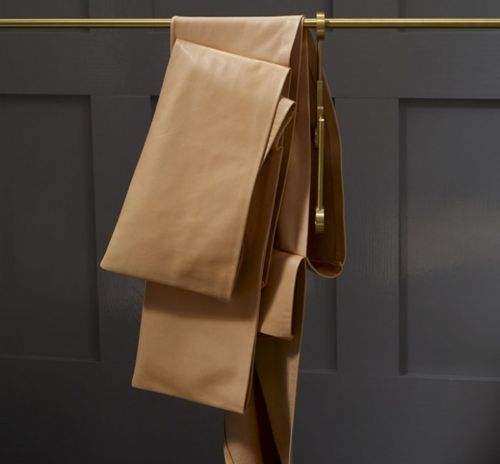
Stephen Friedman Gallery is delighted to announce an exhibition of new work by British artist Claire Barclay. This is the artist’s second solo exhibition at the gallery, and it coincides with her Bloomberg Commission ‘Shadow Spans’ at the Whitechapel Gallery through 2 May 2011.
Barclay is one of her generation’s foremost sculptors. Her practice explores formal and conceptual concerns through both large and smaller scale installations. Turned wood, rawhide, soft leather, machined brass and woven straw are some of the materials that coalesce as the precious and the everyday, the hand-woven and the mechanically produced, are brought to the fore. Familiar forms are hinted at in these careful assemblages. Each sculpted piece teeters somewhere on the brink between the figurative and the abstract, between the ambiguous and the referential.
For her newest body of work, Barclay responds to both the fabric of the gallery, and its location in the heart of the world-renowned tailoring district of Savile Row. Though previously more known for her larger-scale work, for her show here, Barclay has made a group of smaller and more intimate sculptural forms. Hand-printed fabrics draped in the front gallery and hung behind the window beckon the viewer to enter. They also reference the uncut cloths readily found in the workshops of the surrounding tailors and fashion houses. Amongst these fabrics, portions of the gallery’s parquet flooring appear to expand and multiply, rising up from the floor in organic formations. These replica parquet blocks, handmade by the artist, form impromptu plinths for small, domestic-sized objects of leather and metal. Barclay’s physical and almost performative response to the gallery’s spaces reveals the subtle, transformative power yielded by the artist’s hand.
Machine metal and sewn fabric ‘toy-like’ sculptures, somewhat reminiscent of small dolls, expand on Barclay’s interest in the tension that lies between the known and the unknown. Partly disguised in a delicate, thin foil wrapping and hand-printed with a selection of geometric designs, the pieces recall packaged sweets or chocolate Easter bunnies. As the foil is torn away from these moulded forms, so too is the resemblance to the known object. In this transition from the wrapped to the unwrapped, one thing is revealed, whilst another is lost. Barclay’s sculptures capture a moment within this process, as the foil sheath bestows a sensuous fragility that neither fully covers nor wholly reveals the being underneath.
Each component of Barclay’s work has been carefully and purposefully made, either by or for the artist. It is in this process of making, of endeavouring to fully understand the properties of any given material, that the meaning is developed. The end results of this practical endeavour to ‘work through’ are uniquely beautiful sculptural forms, which deny categorisation. Neither functional nor figurative, they initiate a cascade of inferences, suggestions, emotions and ideas in the mind of the viewer.
Claire Barclay (b. 1968 Paisley, Scotland) lives and works in Glasgow. Her Bloomberg Commission ‘Shadow Spans’ at the Whitechapel Gallery runs until 2 May 2011. Other recent solo exhibitions include: Pale Heights, MUDAM, Luxembourg (2009); Claire Barclay, Fruitmarket Gallery, Edinburgh (2009); Open Wide, Camden Arts Centre, London (2008); Fault on the Right Side, Kunstverein Braunschweig, Braunschweig (2007) and Half-Light, Tate Britain, London (2003). Recent group exhibitions include: What Matters, Worcester Art Museum, Worcester, (2010); Material Intelligence, Kettles Yard, Cambridge (2009); If it didn’t exist you’d have to invent it: a partial Showroom history, The Showroom, London (2006) and British Art Show 6, Baltic, Gateshead (2005). Barclay was the recipient of the Hospital Club Creative Award in 2008 and the Paul Hamlyn Foundation Artist’s Award in 2007.
Arcangelo Sassolino
Clayton Brothers: Inside Out
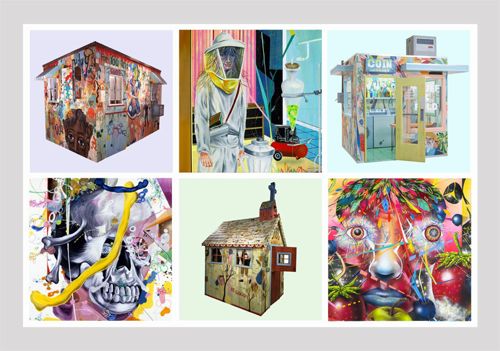
MADISON, WI – Clayton Brothers: Inside Out, a new major exhibition at the Madison Museum of Contemporary Art, presents twenty-six paintings and three mixed-media installations created collaboratively by Rob and Christian Clayton. The Clayton Brothers construct complex narratives that introduce memorable characters and comment wryly on contemporary life. The exhibition, which is organized by museum director Stephen Fleischman, will be on view in the museum’s main galleries from September 12, 2010, through January 2, 2011.
Clayton Brothers: Inside Out is the first museum survey of the brothers’ work. It presents works from the six major series created collaboratively by Rob and Christian Clayton since 2001, beginning with the installation piece Tim House (In Green Pastures)–in the collection of the Madison Museum of Contemporary Art–and concluding with the bold, large-scale canvases of the Jumbo Fruit series. Series titles suggest the disquiet or irony–or often both–that characterizes the individual works. Works in the As Is are connected by the concept of people, like houses or other objects available for purchase, being presented in “as-is” condition, while the Patient series portrays the subjects and ramifications of the medical industry with both humor and dismay.
Stephen Fleischman says the work of the Clayton Brothers has “consistently been informed by vivid color and an eccentric cast of characters. The result is an obsessively rich body of work that strikes universal chords, but remains deeply personal. Front and center are the unique people, animals, and places that occupy the outskirts of the American psyche.”
